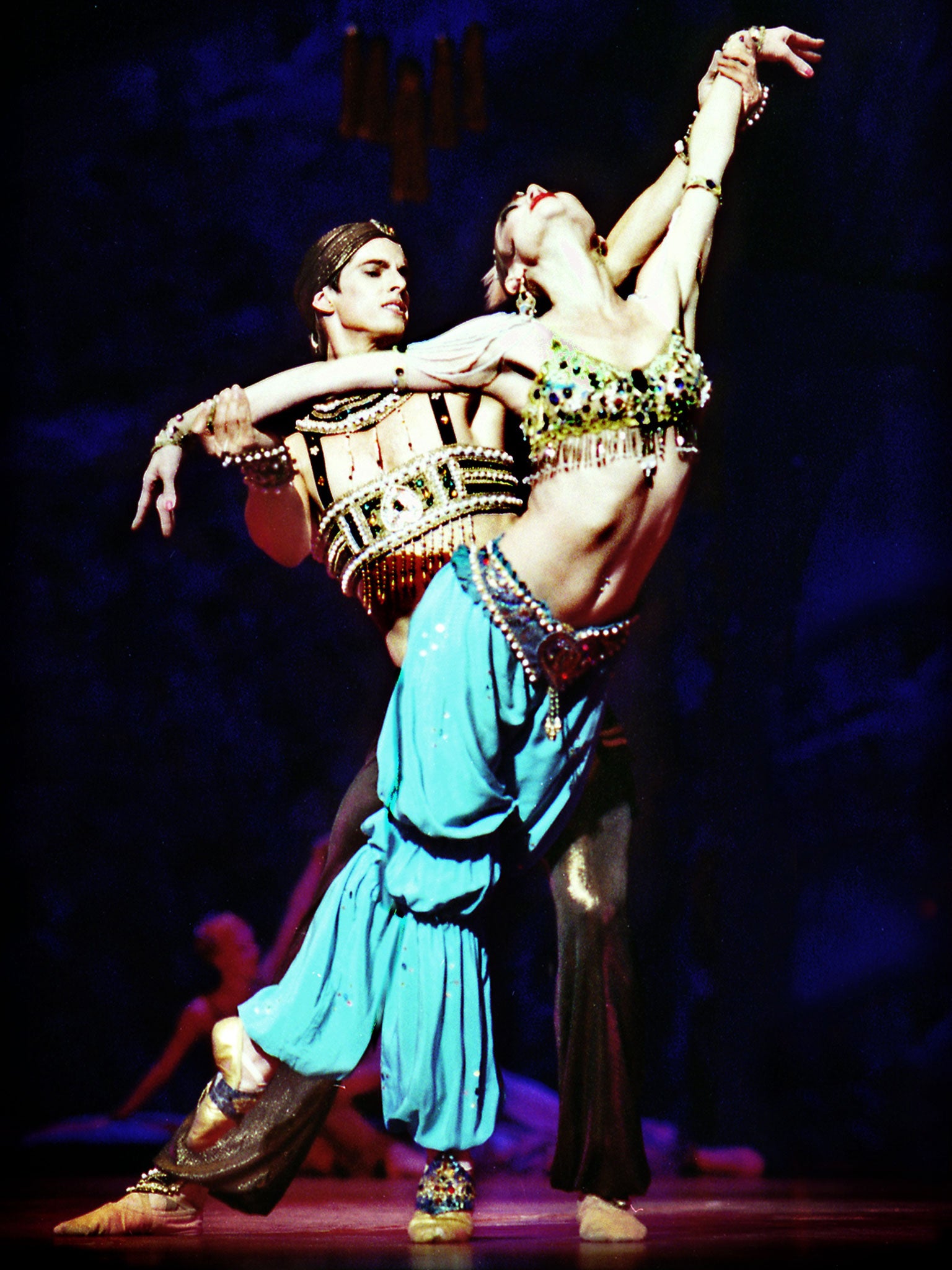Dance review: Saisons Russes du XXIe siècle - Next time, show me the colour of your orchestra
An attempt to resurrect Diaghilev's world is scuppered by a sound system, while Homer inspires the real deal

Your support helps us to tell the story
From reproductive rights to climate change to Big Tech, The Independent is on the ground when the story is developing. Whether it's investigating the financials of Elon Musk's pro-Trump PAC or producing our latest documentary, 'The A Word', which shines a light on the American women fighting for reproductive rights, we know how important it is to parse out the facts from the messaging.
At such a critical moment in US history, we need reporters on the ground. Your donation allows us to keep sending journalists to speak to both sides of the story.
The Independent is trusted by Americans across the entire political spectrum. And unlike many other quality news outlets, we choose not to lock Americans out of our reporting and analysis with paywalls. We believe quality journalism should be available to everyone, paid for by those who can afford it.
Your support makes all the difference.Does it behove an opera house to host productions that use taped music? It's not hard to guess how it happens. The venue needs revenue, and the visiting company – perhaps a new venture – simply hasn't the budget for an orchestra, caught in a Catch 22 of being unable to attract sponsors without prestige, but desperately lacking prestige without live music.
At the Coliseum last week, dismay at the sight of an empty orchestra pit was tempered by sympathy. Everything that could go wrong for Andris Liepa and his Saisons Russes did go wrong. The scheduled centrepiece was a new ballet, Cleopatra, recounting the story of the lost 1909 original and its legendary star, Slinky-on-legs Ida Rubinstein. However, injury to its present-day star prompted an 11th-hour programme change. Hence improvised chat from the Russian entrepreneur (so heavily miked he might have been addressing Trafalgar Square) and technical delays.
Le Spectre de la Rose, also from 1909, makes a dangerous opener – dangerous because its male star must impersonate the perfume of a flower and wear all-over pink. Alas, Xander Parish, a British dancer on loan from the Mariinsky, would barely have registered on a perfumery counter. He carried off the petalled headgear well enough but the effort of getting the steps right showed.
The Firebird was the hastily-mustered centrepiece, sets and costumes freshly modelled on the 1910 originals, including a gorgeous opening scene in which the purple minarets of a city are gradually visible through evaporating mist.
The casting, too, was superb: the Bolshoi's Mikhail Lobukhin, as a properly rugged Tsarevich, the Firebird (Alexandra Timofeeva), bold and wild. Even the 12 pre-Raphaelite maidens, so often wet rags, came across as game girls. The henchmen of Koschei's kingdom didn't quite give enough welly to their rumpus (Stravinsky's score demands a climactic frenzy). But the major disappointment, and the undoing of it all, was the recorded music. It burst the bounds of the speakers and sounded terrible.
Schéhérazade came off even worse, which made you realise the extent to which its Rimsky-Korsakov score is the only solid thing about it. Yet it's not hard to see why the Paris of 1910 was in thrall to its exoticism. The colours and costumes remain eye-boggling, and the out-there sexuality stays just the right side of Carry On camp. Xander Parish as the Golden Slave almost fried in wet-look harem pants and a studded harness. And Yulia Makhalina, the spit of Angelina Jolie but bendier, showed true quality as an earnest, tragic Schéhérazade.
You might have expected a technical hitch or two at Nest, the debut pop-up show of a group calling itself New Movement Collective (136 Shaftesbury Avenue, London *****) – dull name, inspiring venture – spearheaded by ex-Rambert dancer Jonathan Goddard. The venue is a long-abandoned chapel on Shaftesbury Avenue whose spectacular domed and galleried central space is cleverly exploited in a 70-minute "experience" – hard to call it anything else – loosely themed on Homer's Odyssey.
As spectators peer down from galleries on three sides, dancers surge or tumble in waves across the floor. Stripes of light strafe the darkness. A storm at sea is a blitzkrieg of colliding sparks, and tall scaffold towers on casters glide and click into changing forms – a skeletal ship, a city. On a balcony, dancers disport themselves before a great round mirror – a Cyclops eye perhaps.
A free-form promenade sends the audience wandering the building's dark and cobwebby crannies to stumble on evidence of Odysseus's trials: a mysterious harpist, men with pig faces, and a chill-out room strewn with vinyl LPs of music with Odyssean connections. Bright ideas, impeccably achieved. If Diaghilev were alive today, what's the betting he'd be doing things on development sites. Theatres are so last century.
'Nest': today, 23 & 24 July (www.newmovement.org.uk)
Critic's Choice
The Moscow monolith that is the Bolshoi Ballet has been in the news for all the wrong reasons so far this year. But for three weeks it will be putting its best foot forward at the Royal Opera House in a season to mark 50 years since its first London visit. Highlights, following the default opener (above) Swan Lake (from 29 July) are the company’s lavish new production of Sleeping Beauty (5-9 Aug) and a new take on the Soviet classic The Flames of Paris (16 & 17 Aug). Man the barricades!
Join our commenting forum
Join thought-provoking conversations, follow other Independent readers and see their replies
Comments